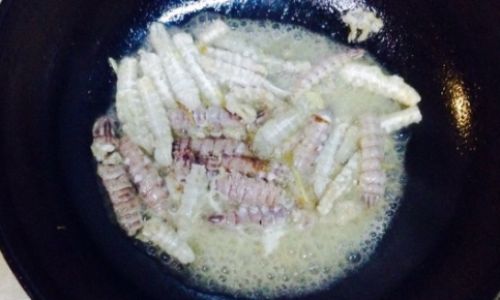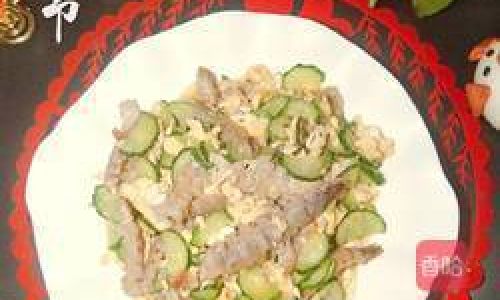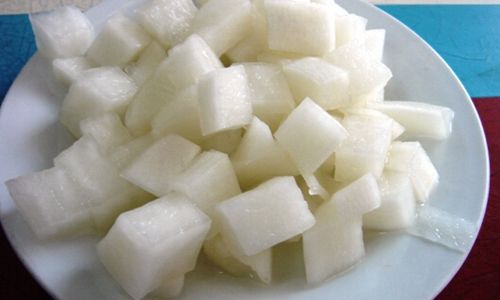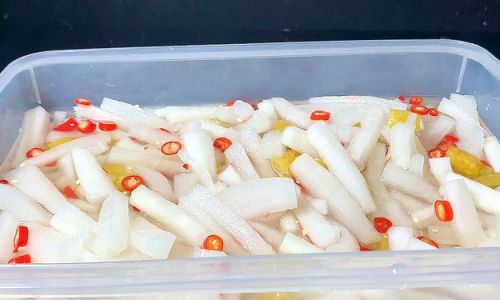Introduction
Frozen mantis shrimp meat, often overlooked in culinary circles, is a versatile and delicious ingredient that deserves a place in every home cook’s repertoire. Known for its sweet, briny flavor and tender texture, mantis shrimp—or squilla mantis—is a crustacean prized in coastal regions for its unique taste. While fresh mantis shrimp can be challenging to source, frozen varieties offer convenience without compromising quality. This article delves into the intricacies of preparing frozen mantis shrimp meat, from thawing techniques to cooking methods, ensuring you achieve restaurant-worthy results every time. Whether you’re a seasoned chef or a novice in the kitchen, this guide will equip you with the knowledge to transform this frozen delicacy into a memorable meal.
Understanding Frozen Mantis Shrimp Meat
Before diving into recipes, it’s essential to grasp the basics of frozen mantis shrimp meat. Unlike prawns or lobsters, mantis shrimp have a distinct appearance, with elongated bodies and powerful claws. Their meat is lean, slightly firm, and boasts a delicate sweetness that pairs well with various flavors. When purchasing frozen mantis shrimp, opt for products labeled “IQF” (Individually Quick Frozen), as this method preserves texture and flavor better than block freezing. Avoid packages with excessive frost or ice crystals, as these may indicate freezer burn or improper storage.
Thawing Techniques: The Foundation of Flavor
Thawing frozen mantis shrimp meat correctly is the first step to ensuring optimal taste and texture. Improper thawing can lead to mushy meat or loss of flavor. Here are three reliable methods:
-
Refrigerator Thawing
This is the safest and most gradual method. Transfer the frozen meat from its packaging to a covered container and place it in the refrigerator. Allow 8–12 hours for thawing, depending on the quantity. This slow process minimizes moisture loss and keeps the meat at a safe temperature.
-
Cold Water Bath
For a quicker thaw, seal the meat in a airtight plastic bag and submerge it in cold water. Change the water every 30 minutes to maintain a consistent temperature. Smaller portions may thaw in 1–2 hours, while larger ones could take up to 3 hours. Never use hot water, as it can promote bacterial growth and compromise texture. -
Microwave Defrosting
Use this method sparingly, as microwaves can partially cook the meat, leading to uneven texture. If pressed for time, place the meat on a microwave-safe plate and use the defrost setting, checking every 1–2 minutes. Cook immediately after thawing.
Preparation: Cleaning and Seasoning
Once thawed, pat the meat dry with paper towels to remove excess moisture. Mantis shrimp meat is typically sold pre-cleaned, but if raw, you may need to devein or remove the intestinal tract using a sharp knife. For added flavor, marinate the meat for 15–30 minutes. Popular marinades include olive oil, garlic, lemon zest, herbs (such as parsley or cilantro), and a pinch of red pepper flakes. Avoid acidic marinades (like those with vinegar or citrus) for more than 30 minutes, as they can toughen the meat.
Cooking Methods: From Stir-Fries to Soups
Frozen mantis shrimp meat’s adaptability shines in diverse cooking styles. Below are six techniques to elevate your dishes:
-
Pan-Searing for Crispy Texture
Heat a skillet over medium-high heat with a drizzle of oil. Once hot, add the meat in a single layer. Cook for 2–3 minutes per side until golden brown. Finish with a squeeze of lemon and a sprinkle of flaky sea salt. This method highlights the meat’s natural sweetness. -
Stir-Frying with Asian Flavors
Toss thawed mantis shrimp meat with soy sauce, ginger, and garlic. Stir-fry in a wok with vegetables like bell peppers, snap peas, and onions. Serve over steamed rice or noodles for a quick weeknight meal. -
Grilling with Herb Butter
Skewer the meat and brush with melted butter mixed with chopped herbs (thyme, rosemary, or tarragon). Grill over medium heat for 2–3 minutes per side. The smoky char complements the meat’s delicate flavor. -
Baking in Garlic Parmesan Sauce
Toss thawed meat in a mixture of melted butter, minced garlic, grated Parmesan, and breadcrumbs. Bake at 400°F (200°C) for 10–12 minutes until golden and bubbly. This dish pairs wonderfully with crusty bread. -
Simmering in Light Broths
Add mantis shrimp meat to clear soups like tom yum or miso during the final 2–3 minutes of cooking. The meat absorbs the broth’s flavors while retaining its tenderness.
-
Ceviche-Style Preparation
For a no-cook option, marinate thawed meat in citrus juices (lime or lemon) with diced tomatoes, onions, and cilantro. The acid “cooks” the meat, resulting in a refreshing appetizer. Serve with tortilla chips.
Pairing Suggestions and Side Dishes
Mantis shrimp meat’s versatility allows it to shine alongside various accompaniments. Light, citrusy sides like lemon risotto or grilled asparagus balance its richness. For heartier meals, pair with roasted potatoes or garlic mashed cauliflower. In Asian-inspired dishes, serve with coconut rice or udon noodles. Don’t forget dipping sauces—aioli, chili-garlic sauce, or a simple cocktail sauce enhance the natural flavors.
Storage and Reheating Tips
Leftover cooked mantis shrimp meat should be stored in an airtight container in the refrigerator for up to 3 days. To reheat, avoid microwaving, as this can overcook the meat. Instead, gently warm in a skillet over low heat or in a preheated oven (300°F/150°C) until heated through.
Health Benefits and Nutritional Profile
Mantis shrimp meat is a nutritional powerhouse. It’s low in calories and saturated fat while being rich in protein, making it ideal for weight-conscious diets. It also contains omega-3 fatty acids, which support heart and brain health. Additionally, it’s a source of selenium, zinc, and vitamin B12. However, those with shellfish allergies should avoid it.
Troubleshooting Common Issues
- Rubbery Texture: Overcooking is the primary culprit. Cook mantis shrimp meat until just opaque—usually 2–4 minutes, depending on the method.
- Bland Flavor: Enhance with bold seasonings like smoked paprika, garlic, or fresh herbs. Marinating also adds depth.
- Fishy Aroma: Soak thawed meat in milk for 15 minutes to neutralize odors, then pat dry before cooking.
Creative Recipe: Mantis Shrimp Tacos with Mango Salsa
Ingredients:
- 1 lb frozen mantis shrimp meat, thawed
- 1 tbsp olive oil
- 1 tsp chili powder
- 1/2 tsp cumin
- Salt and pepper to taste
- 8 small corn tortillas
- Mango Salsa: Diced mango, red onion, jalapeño, cilantro, lime juice
- Optional Toppings: Avocado slices, crumbled feta, lime wedges
Instructions:
- Toss thawed meat with olive oil, chili powder, cumin, salt, and pepper.
- Sauté in a skillet over medium heat for 3–4 minutes until cooked through.
- Warm tortillas and assemble tacos with meat, mango salsa, and toppings.
Conclusion
Frozen mantis shrimp meat is a culinary gem waiting to be discovered. By mastering thawing techniques, experimenting with cooking methods, and pairing it with complementary flavors, you can create dishes that rival those served in seaside restaurants. Whether you prefer it seared, grilled, or simmered, this ingredient’s adaptability ensures it never grows stale. So next time you spot a bag of frozen mantis shrimp meat, don’t hesitate—let this guide be your compass to a delightful meal.





0 comments